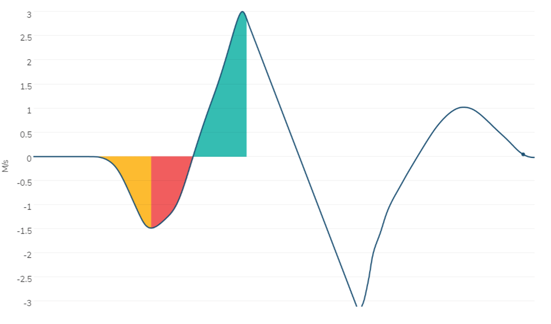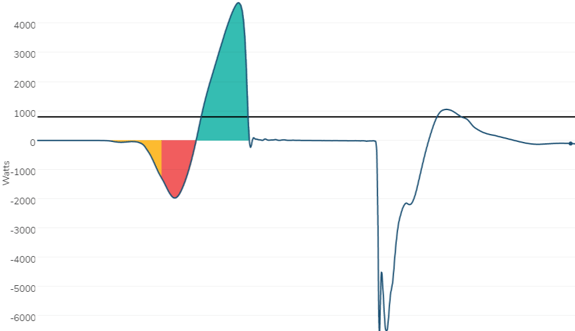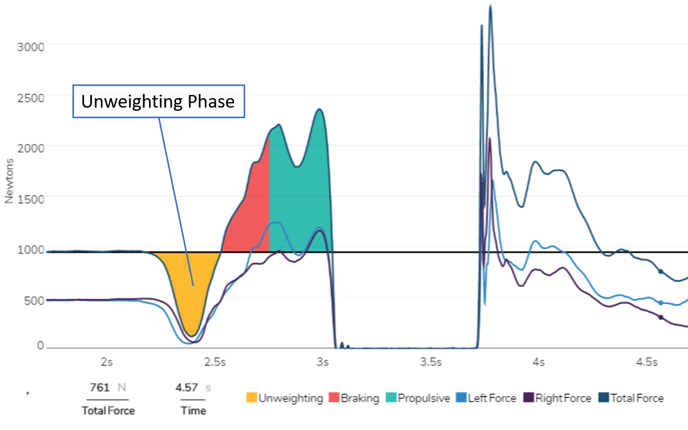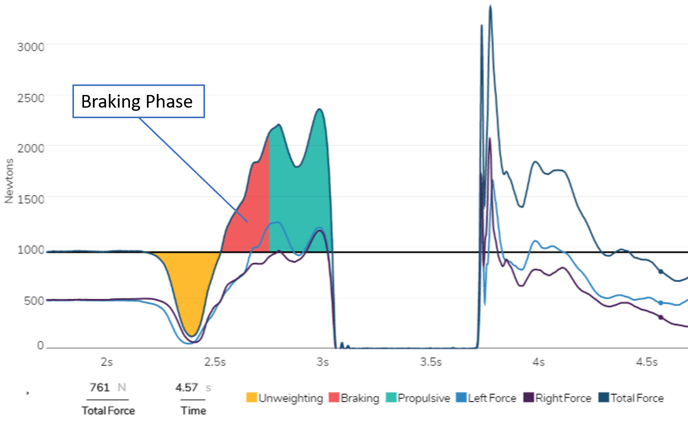Welcome to the #HawkinFamily – this article provides a brief overview of using force plates for jump testing and serves as a reference for interpreting metrics outputted by our system.
The Basics
Our system records data at 1000 Hz, providing you with force data - i.e. how hard you can push into them. If you stand still on our plates, they'll record your bodyweight in newtons. The figure below shows a force time curve from a countermovement jump (CMJ) - force is on the Y (vertical) axis and time is on the X (horizontal) axis. 
When you move on the plates, changes in the pattern and magnitude of the force applied to the plates reflect your performance. Because we know that force = mass multiplied by acceleration, we are able to take our force and divide it by the jumper’s body mass (measured in kg) to get the jumper’s acceleration. Acceleration tells us whether the jumper is speeding up or slowing down. If we multiply this by time, we get velocity: how fast the jumper moves and the direction they move in (in our case, with gravity or against gravity/down or up). Knowing this enables us to deconstruct the force-time curve into distinct phases - see a calculated velocity curve below. 
Additionally, once we have velocity, we can calculate other variables like displacement (how far and in what direction our jumper is moving) and power (the rate the jumper performs work). We may be biased of course, but the really cool thing about our system is that it gives you all of this information in the palm of your hand so you don’t have to worry about these calculations.
.png?width=597&name=Drake%20Berberet-Countermovement%20Jump-Displacement%20(2).png)

Breaking Down the Curve
Different Jump Phases
Using velocity, we are able to break jumps down into different phases. These phases are descriptive of how an athlete's velocity changes during the movement, and are often also indicative of what kind of muscle action they are enduring.
 Phases of a Countermovement Jump
Phases of a Countermovement Jump
- Occurs at the beginning of every test
- Used to determine bodyweight and threshold for movement initiation
- Most important phase for ensuring data integrity
Unweighting Phase
- Typically denoted by a yellow fill in the graph
- Occurs at movement initiation for some jump types
- Initial drop into a movement (think CMJ) where athlete is essentially free falling in the direction of gravity

Unweighting Phase of a Countermovement Jump
Braking Phase
- Denoted by Red fill in the graph
- Phase when athlete is slowing descent and stretching muscles to absorb force
- Eccentric

Braking Phase of a Countermovement Jump
- Propulsive Phase
- Denoted by Green Fill in the graph
- Period when athlete is pushing into the ground to jump
- Concentric

Propulsive Phase of a Squat Jump
- Flight Phase
-
The period when the athlete is in the air. Therefore, no force is being applied to the ground during this phase
-
- Landing Phase
- Phase when the athlete absorbs force after flight
- Contact Phase
- Unique to Drop Jump and CMJ rebound
- Used to describe a fast stretch shortening cycle (<250ms) movement on the force plates.
- Consists of braking and propulsive.

Contact Phase of a Drop Jump
 Contact Phase of a Countermovement Rebound Jump
Contact Phase of a Countermovement Rebound Jump
Need additional help?
Email: techsupport@hawkindyanmics.com
-2.png?height=120&name=Hawkin%20Logo%20(2)-2.png)